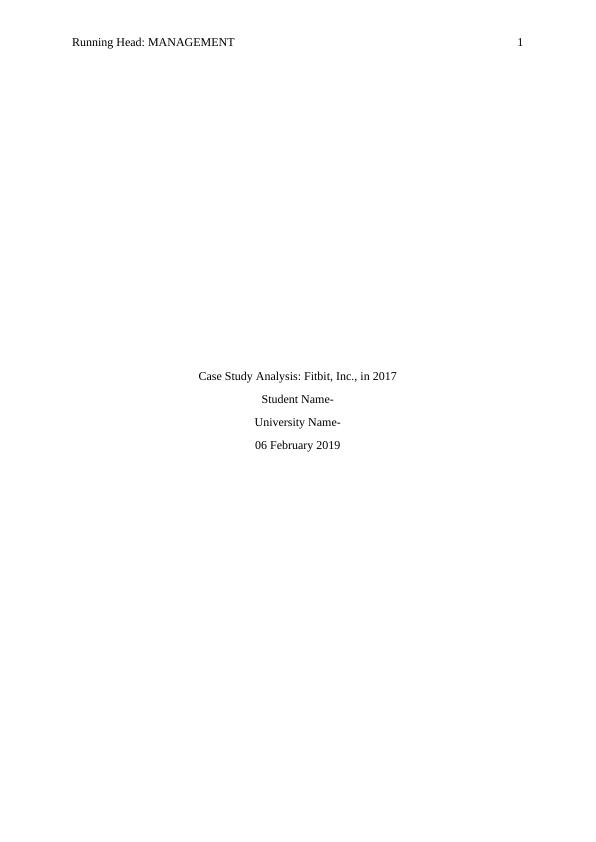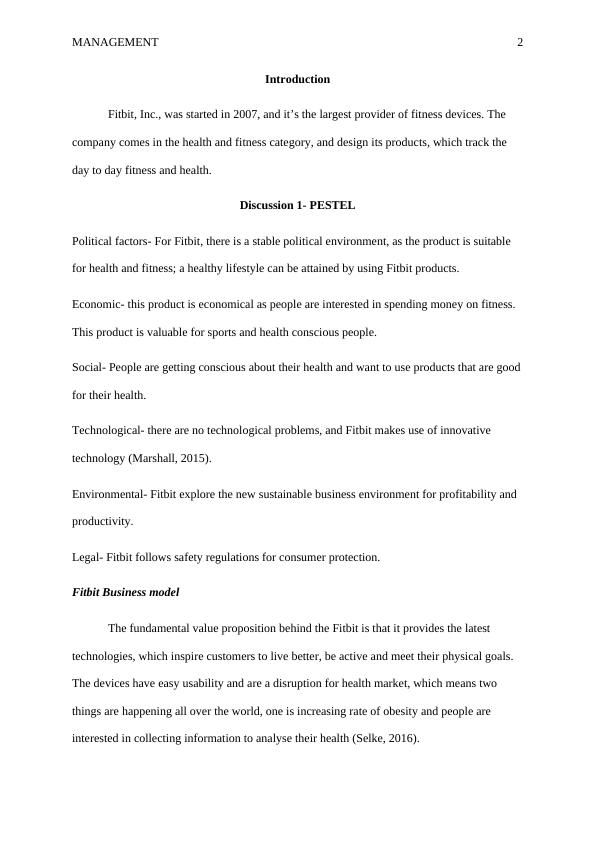Case Study Analysis: Fitbit, Inc., in 2017
Analyzing the company Fitbit using a case study from the textbook, divided into four sections requiring insights and evidence of creative and critical thinking.
8 Pages1791 Words253 Views
Added on 2023-04-26
About This Document
This case study analysis of Fitbit, Inc., in 2017 discusses its business model, marketing mix, competitive advantage, and recommended solutions to stay competitive in the global market. It also includes a PESTEL analysis and Porter's Five Forces model analysis.
Case Study Analysis: Fitbit, Inc., in 2017
Analyzing the company Fitbit using a case study from the textbook, divided into four sections requiring insights and evidence of creative and critical thinking.
Added on 2023-04-26
ShareRelated Documents
End of preview
Want to access all the pages? Upload your documents or become a member.
Report on Marketing Factors to Increase Customers : FITBIT organisation
|7
|1591
|1578
Competitive Analysis of Apple Inc.
|5
|964
|123
Health Care Management Case Study 2022
|4
|744
|27
Sustainable Business Practices and Strategies - Evaluation of Competitive Forces
|13
|2957
|217
Business Environment: Hemel Hempstead
|12
|3848
|93
Business and Strategy of Walmart
|7
|1485
|226



